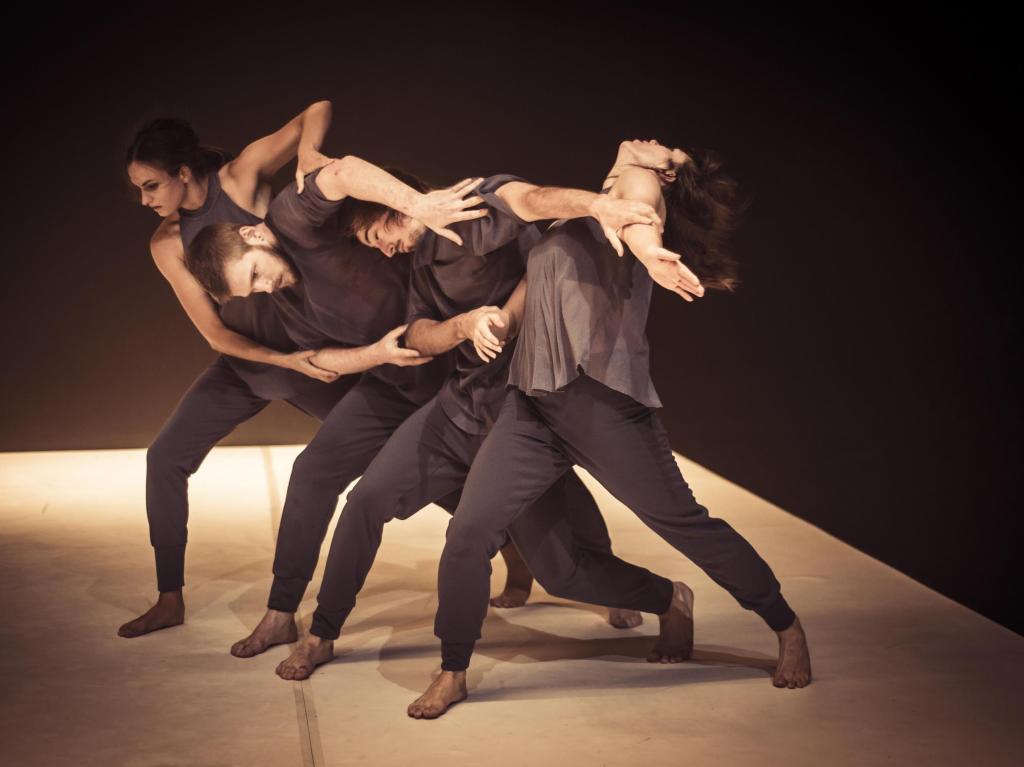Photo by Pippa Samaya
I’ll begin this review by stating that I don’t know a whole lot about dance. I’m not a dancer or choreographer myself (not outside of my bedroom, anyway), and I don’t get to see much dance. I can’t tell you about the technical proficiency of the dancers, or the influences and stylistic features of the choreography. What I can tell you about, as a theatre reviewer and live artist, is the wholly considered live experience that this piece offers its audience.
Sitting in the seating bank of the theatre at Northcote Town Hall, we’re faced with a wide, white floor, black curtains, and a sound and lighting operator on a small platform to stage right. The audience is buzzing with chatter and the rustle of coats and bags. Soon, though, the audience falls silent. Why? Has the performance begun? Is it just one of those awkward false starts that can happen in live performance? We’re all sitting silent and still for a good ten seconds before the lights dim and the dancers appear.
What follows is a sequence of vignettes featuring some or all of the company of four dancers. There is the use of sound equipment by the dancers to create distortion and noise from their bodies and the points of contact they make with each other. There are references, both explicit and implied, to experiments – experiments on the body itself, and on the interaction of different bodies under different conditions. Their uniform costumes look like doctors’ scrubs from the front, but are open at the back like ward dresses. The dancers wrestle with each other in one vignette, and are tender and fluid with each other in the next. There are, at times, assaults on our senses – flickering lights and sudden, loud noise. The piece seems to concern itself with power and control, which plays out both on stage and in the audience. In a number of moments – including the aforementioned silence before the show, but also in the flinches and shivers that run through the audience, and even in a section where we are literally made to clap – I found myself marvelling at Stephanie Lake’s ability to extend the reach of her choreography into the audience, the offers of her performers and designers landing in a very real way in our bodies.
In the program notes, this piece claims to explore the idea of internal conflict made external, as well as the implications of psychological experiments testing the limits of human compassion and cruelty. I saw all of this in the piece, and I also saw more. As a writer, dance can often make me feel adrift in an absence of language, and meaning becomes difficult to read or construct. But if I felt lost in this piece, it was a sensation that I absorbed and relished. Intimacy and violence were woven side by side, and the connection was neither romanticised nor judged. Lake and her company of dancers and artists give us a beautiful and compelling space in which to meditate upon the nature of conflict in human relations, both internal and external.
Rating: 4 stars out of 5
Double Blind
Choreographer – Stephanie Lake
Composer, Sound Designer & Operator – Robin Fox
Dancers – Alisdair Macindoe, Alana Everett, Amber Haines and Kyle Page
Lighting Designer – Bosco Shaw
Costume Designer – Harriet Oxley
Production Manager – Glenn Dulihanty
Producer – Freya Waterson
Northcote Town Hall
15-20 February 2016





